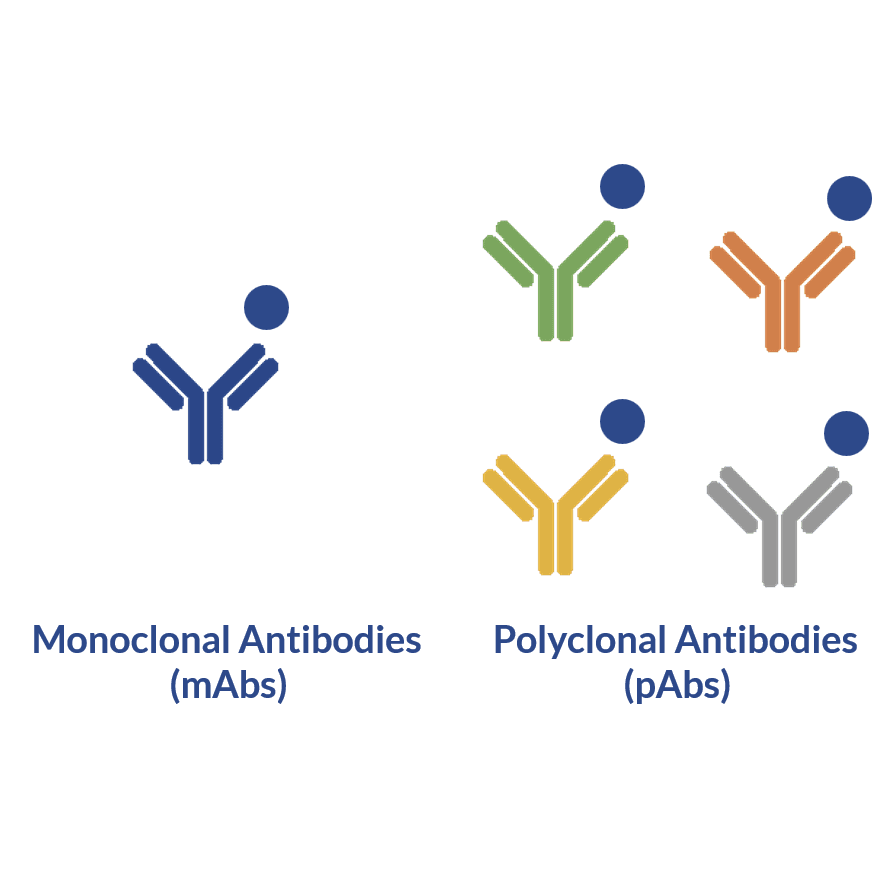

Protein antigens are generally best when the goal is to elicit production of as many different antibody clones to detect as many different possible epitopes on the target protein. Gene-specific expression of recombinant proteins (or recombinant protein fragments) is often used to ensure that the purified protein antigen is precisely the one intended.


Nearly any purified protein (>90% pure) can be used as an antigen for antibody production. Need a very consistent source of an antibody over an extended period of time or are planning to commercialize the antibodyįor the purpose of antibody production, polypeptides are considered proteins if they are larger than nine kilodaltons (9 kDa) and do not need to be conjugated to a carrier protein to be made immunogenic.Plan to put the antibody in some sort of diagnostics or therapeutic proof of concept.Need to quantitatively detect a protein (e.g., ELISA).As a general rule, choose monoclonal antibody development only when you: For example, a monoclonal antibody produced for use in ELISA might not work at all for western blotting. However, monoclonal antibodies are more expensive to develop and produce than polyclonal antibodies, and they are not as broadly applicable in different assay methods. Screening protocols are essential to establishing antibody populations that function in the intended assay use. Larger animals yield more antiserum per bleed than smaller ones.īecause monoclonal antibody development yields cell lines that produce exactly one specific molecular form of antibody which can be maintained and cultured indefinitely, it is the best option for applications requiring consistent performance in quantitative detection, regardless of production batch. These provide the opportunity to design assays to take advantage of host-specific secondary antibodies. Several different host species can be used for polyclonal antibody production, including rabbit, guinea pig, rat, mouse, goat, and chicken. The main disadvantages of polyclonal antibody production are that it yields only a limited amount of antibody (i.e., the duration of the immunization schedule), having variable consistency. A population of antibodies having greater specificity can be obtained by secondary purification (positive or negative) from the antiserum. They are far less expensive to produce than monoclonal antibodies and they generally have higher affinity and broader utility across assay methods. Polyclonal antibodies are nearly always the best choice for applications involving qualitative detection or purification, such as western blotting or immunoprecipitation. Crude serum usually contains several particular antibody clones against the injected antigen, as well as against other antigens to which the animal has been exposed in its environment. Therefore, consideration should be given to the host species in which the primary antibody was raised vs the sample species (e.g., if your sample is from a mouse, the primary antibody should not be from mouse since your secondary antibody would be directed against nonspecific mouse IgG).Polyclonal antibodies represent the total population of immunoglobulins produced by an animal in response to an antigen. They are usually directed against the IgG portion of the species in which the primary antibody was made.

Secondary antibodies facilitate signal detection and amplification. Labeled antibodies against several important biological target proteins are commercially available. Since fluorophores with absorption and emission maxima spanning the entire light spectrum are available, combinations of antibodies conjugated to fluorophores of different wavelengths can be used to detect multiple proteins. By using different combinations of filters, specific wavelengths of light can be measured. These fluorophore-conjugated antibodies utilize the property of fluorophores to absorb light at a certain wavelength and emit it at a different wavelength.


 0 kommentar(er)
0 kommentar(er)
